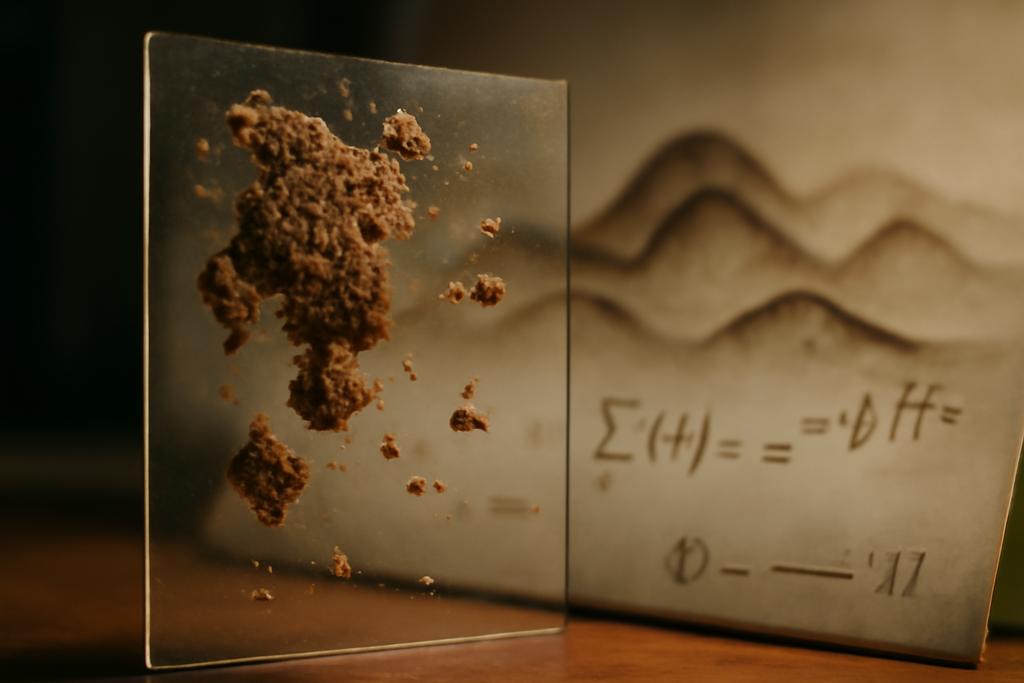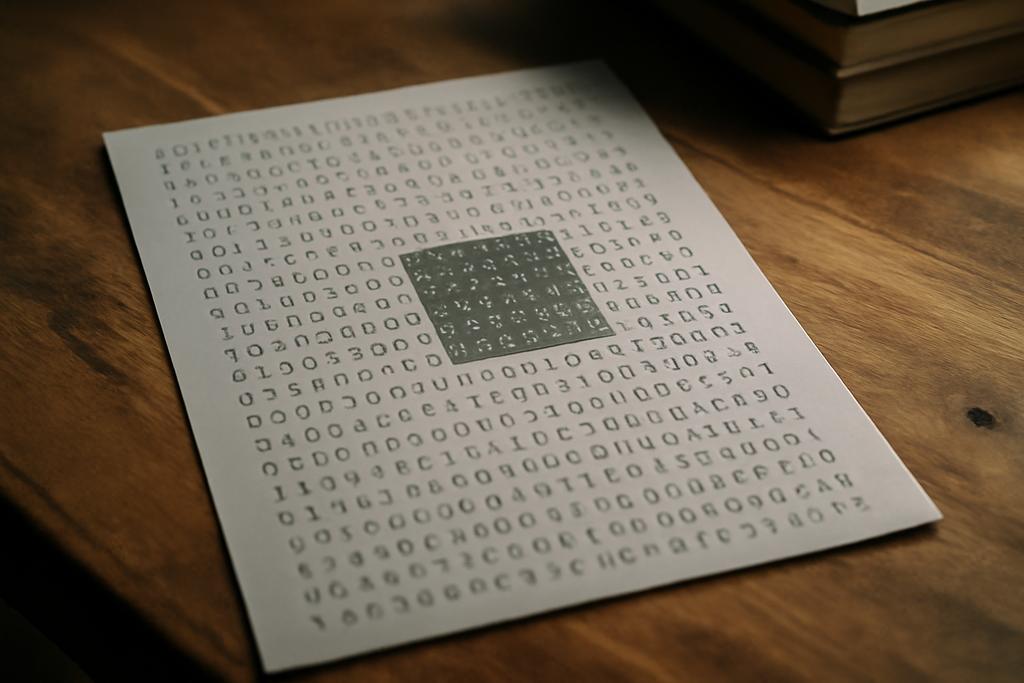When dark matter pushes back, halos bloom with complexity
Galaxies—the luminous islands we see in the night sky—sit in an invisible, gravitational cocoon made of dark matter. For decades, physicists treated this mysterious substance as a silent partner: heavy enough to sculpt gravity, but ghostly enough to dodge the light. A leading idea, called fuzzy dark matter, imagines ultra-light bosons that behave like a quantum fluid on galactic scales. In this picture, the inner heart of a galaxy can host a solitonic core—a compact, wave-like centerpiece stabilized not by particles colliding, but by a quantum pressure that resists gravity. Surrounding it, a bustling halo of semi-coherent density fluctuations forms, peppered with tiny whirlpools of quantum vorticity. The whole ensemble looks calm from afar, yet hums with turbulent, wave-driven activity up close.
Now a team at Newcastle University—Milos Indjin, I-Kang Liu, Nick Keepfer, Nick P. Proukakis, and Gerasimos Rigopoulos—has asked a crucial question: what if those dark matter particles repel one another a little? The study, carried out with state-of-the-art simulations, explores repulsive self-interactions of moderate strength in fuzzy dark matter halos. The researchers’ simulations start from a simple seed—ten random density lumps that merge under gravity—and watch what happens as the particles begin to push back against each other. The result is a richer, more nuanced portrait of halos: bigger, more diffuse cores; a halo filled with persistent turbulence and vortices; and a core that remains coherent even as the outer regions grow more chaotic. The work is a landmark in connecting microphysics—the quantum-scale interactions of the particles—to the grand-scale structure of galaxies.
Self-interacting fuzzy dark matter reshapes halos
The paper translates a familiar quantum-fluid picture into astrophysical reality. The core engine is a pair of coupled equations—the Gross-Pitaevskii equation for the fuzzy dark matter field, and Poisson’s equation for gravity. In plain language, the model treats the dark matter as a single quantum field that both spreads out (because of quantum pressure) and pulls itself together under gravity. When there is no self-interaction (g = 0), the core is small and tightly bound by quantum pressure. Turn on repulsive interactions with a moderate strength, and the core swells; the central density drops; and quantum pressure cedes some of its grip to the self-interaction energy that tends to push particles apart. The team quantifies this transition with a dimensionless ratio Γg = g/g*, where g* is a characteristic self-coupling set by the soliton’s mass and the halo’s gravity. In the regime they study—Γg ranging from near zero to several—self-interactions alter the core and little the outer halo.
One of the paper’s striking visuals is a progression of simulated halos where the core expands and the center becomes noticeably less dense as g grows. The core’s radius rc grows in tandem with the interaction strength, while the peak density ⍴c declines. The surrounding granules—those semi-coherent, patchy density features in the halo—also get a nudge: their typical size grows, but not as dramatically as the core, and the distances between the quantum vortices don’t shift dramatically either. In this sense, the core behaves like a newly expanded but still stable island in a turbulent sea, while the halo’s sea remains turbulent but not fundamentally reconfigured by these moderate repulsions.
Coherence, solitons, and the vortex network
Coherence is the heart of the solitonic core. In a non-interacting fuzzy dark matter halo, the central soliton is a pristine Bose-Einstein condensate—a state where a single quantum mode dominates, and phase and density fluctuations are suppressed. The researchers’ prior work showed that the central core aligns with the Penrose-Onsager (PO) mode, the mathematical fingerprint of a condensate. When self-interactions enter the scene, the picture becomes subtler. The core remains largely coherent, but the condensate fraction—roughly, how pure the condensate really is—begins to dip, even inside the core, as g climbs. The reason is not simply quantum depletion from short-range interactions (which would require a much more intense interaction network) but a combination of enhanced fluctuations and a modest reshaping of the core’s gravitational potential as the TF-like, self-interaction-dominated regime begins to take hold.
Beyond the core, the halo stays a bustling, quasi-condensed landscape. The team confirms a clear separation between the coherent core and the more chaotic halo, even as the density fluctuations grow with g. The halo features a tangle of quantized vortices—the hallmark of superfluid turbulence in quantum fluids. Intriguingly, the total length of this vortex network shows no strong dependence on the self-coupling within the studied range, and the network does not display signs of decay on the simulation timescales. In other words, the self-interactions don’t magically damp out the turbulence; they reshape the core while leaving the outer halo’s vortex dynamics largely intact. This is a reminder that gravity’s grip in the halo’s outskirts still dominates, and the quantum turbulence there sits in a delicate balance with the slowly evolving gravitational and kinetic energies.
Granules, halos, and the fingerprints of coherence
The study introduces a practical way to separate the core from the halo: a super-Gaussian profile for the soliton, glued to a slowly declining halo described by a Navarro–Frenk–White (NFW)–like tail. This bimodal density profile lets the authors extract the core radius rc, the transition radius rt where the core yields to the halo, and the halo scale rh. The results show a coherent, self-consistent story: as the core grows with g, its oscillation frequency drops, and the central density falls—precisely what one would expect when self-interactions bolster stability against gravity.
Several observables reinforce the idea that the core and halo live in different dynamical regimes. The phase coherence, captured by the first-order correlation function g1(r), and the density fluctuations, captured by g2(r), both indicate a plateau of quasi-condensation inside rc, with coherence gradually dissolving as one moves outward. The PO mode tracks the core’s density remarkably well for r ≲ rc, but the match softens when g > 0, revealing a subtle depletion of the condensate even at the very center. This depletion isn’t a catastrophic failure of condensation; it’s a window into how the halo’s semi-coherent, vortex-laden interior interacts with the core’s more orderly state.
Why this matters for galaxies
Why should a theorist care about the murmur of quantum vortices in a halo far, far away? Because the core-halo structure of fuzzy dark matter is a candidate explanation for why some galaxies look the way they do: flat rotation curves, a shallow central density, and a smooth transition from a dense core to a more extended halo. By introducing repulsive self-interactions, the authors demonstrate a plausible mechanism for expanding the core without wrecking the halo’s outer structure. In other words, the model can simultaneously address two observational challenges: the need for a sizable, low-density core and the desire to reproduce the halo’s extended mass distribution with a single boson mass parameter.
What makes the Newcastle results particularly compelling is their tie to an independent observational thread: rotation-curve fits to real galaxies suggest that a non-zero self-interaction strength might be preferred in some cases. In a parallel analysis (also led by Newcastle researchers), the team found that rotation curves in the SPARC database could be naturally described by a narrow band of boson masses coupled with a well-chosen self-interaction strength. One galaxy highlighted in that broader study, KK 98-251, is said to be well described with a g/g* in a portion of parameter space that overlaps with the current simulations. If real galaxies inhabit this regime, the halos’ cores would be bigger and less central-dense than in purely non-interacting fuzzy dark matter, with a halo that still carries the fingerprints of wave-like granules and quantum vortices.
Broader implications and paths forward
Several implications ripple outward from these findings. First, the core’s growth and its decreasing central density with increasing self-interaction strength offer a natural explanation for the diversity of galactic rotation curves without invoking a different dark matter particle mass for every galaxy. A moderate g makes the core expand while preserving a surrounding, wave-driven halo—an appealing way to reconcile a common boson mass with a variety of galactic profiles. Second, the persistence of a vortex network in the outer halo suggests that quantum turbulence could imprint subtle, observable signatures, perhaps in the way halos lens light or in the fine structure of stellar motions. Those signals would be hard to tease out, but they map onto real astrophysical observables—an exciting prospect for future surveys and simulations.
For theorists, the work also raises new questions. The authors stress that their exploration centers on weak-to-moderate repulsive interactions, Γg up to about 6.3. Pushing deeper into the Thomas–Fermi regime, where self-interactions dominate quantum pressure, could reveal new twists in the core-halo interplay and possibly alter how vortices behave in the outer halo. The study also nods to hybrid models that mix fuzzy dark matter with cold dark matter components, a promising avenue for combining wave-like dynamics with the particle-based realism of CDM. The dialogue between simulations, observations, and hybrid theories is only beginning—and this work provides a vivid, quantitative foothold for that dialogue.
At the heart of this research is a simple, human impulse: to understand how the unseen, delicate rules of quantum physics ripple through cosmic scales to shape galaxies we can see with our telescopes. The Newcastle team has given us a clearer map of how self-interactions nudge a halo’s interior, while leaving the outer halo’s quantum weather largely intact. It’s a reminder that the cosmos is not a simple, monolithic realm of gravity; it’s a layered, living system where tiny forces—like a repulsive self-interaction—can cascade into observable complexity across thousands of light-years.
For researchers and curious readers alike, the study stands as a testament to the power of numerical experiments in astrophysics. By marrying the Gross-Pitaevskii framework with gravity and pushing it through the crucible of merging halos, the team has drawn a more intricate portrait of fuzzy dark matter. They show that a modest self-interaction can sculpt the core’s size and density, alter the core’s rhythm, and preserve a resilient, vortex-laden halo. In the end, the halos aren’t simply bigger or smaller; they’re more textured, more dynamic, and—surprisingly—more human in their quantum-tinged complexity.
As the authors themselves note, the cosmos may harbor a spectrum of self-interaction strengths across galaxies. If so, halo cores could be a living archive of those microphysical choices, waiting to be read by future observations, lensing maps, and high-precision rotation curves. Newcastle University’s researchers have given us a crucial key to read that archive, turning abstract equations into a narrative about how the universe’s most elusive matter binds, breathes, and dances at the heart of galaxies.










